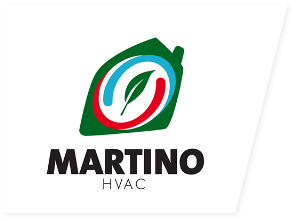What Can Be Done About Detecting Carbon Monoxide In The Home?
Carbon monoxide (CO) is a highly poisonous gas that can be fatal if inhaled in large amounts. You can’t see or smell carbon monoxide gas, which makes it even more dangerous. Carbon monoxide can infiltrate your home without you ever knowing until symptoms strike.
The longer and more significant a person’s exposure to carbon monoxide, the more severe the symptoms can become, ultimately leading to death.
Carbon Monoxide in the Home
A malfunctioning or inappropriately used heating, cooking, or ventilation system in the home can allow leakage of carbon monoxide gas into the air, leaving you breathing toxic gas without knowing it.
Carbon monoxide can come from a number of sources within the home:
- Furnace systems and chimneys with leaks
- Kerosene heaters
- Wood-burning stoves and fireplaces
- Gas ranges
- Generators
- Appliances fueled by gasoline
- Gas-fueled space heaters
- Fireplaces that aren’t vented
- Cigarette and pipe smoke
Carbon Monoxide and Your Health
When carbon monoxide gas contaminates the air, you breathe in more carbon monoxide than oxygen. Once it enters the body, carbon monoxide gets into the blood, where it takes the place of oxygen; this happens most notably in vital organs like the brain and heart, which then become oxygen-deprived.
The first symptoms of carbon monoxide poisoning include:
- Chest tightness or shortness of breath
- Tiredness
- Nausea
- Confusion
- Headaches
- Dizziness
How carbon monoxide affects your health depends on the amount of carbon monoxide exposure and on how long the exposure lasts. Carbon monoxide poisoning may cause some of the immediate short-term effects noted above, but it can quickly turn serious, with nausea, vomiting, and loss of muscle coordination coming next. Inhaling high quantities of carbon monoxide can quickly lead to unconsciousness and suffocation.
Preventing Carbon Monoxide Poisoning
A carbon monoxide detector is a must for any home and just as important as a smoke detector. CO detectors should be placed near all bedrooms; they’re the only way you will know if carbon monoxide is affecting the air quality in your home, and can help prevent serious illness and even death.
Follow all the manufacturer’s directions, including how often the unit needs replacing, and always make sure there’s a UL (Underwriters Laboratories) certification tag on the model you buy. Unfortunately, not all carbon monoxide detectors are 100 percent effective — some brands did well during independent testing, and others didn’t. Investigate models before you buy to choose one that rated highest in tests.
If you experience any carbon monoxide poisoning symptoms, even if the detector alarm hasn’t sounded, get everyone out of your house into fresh air immediately.
According to the U.S. Environmental Protection Agency, using a carbon monoxide detector is only a part of effective prevention. Also be sure all fuel-burning appliances get regular maintenance and are working properly. To reduce the risk of carbon monoxide in your home, follow these tips:
- Always open the flue when using a fireplace.
- Never leave your car turned on in the garage; for instance, if you warm it up before driving in the winter, do it outside.
- Be cautious using wood-burning stoves: Make sure they are certified by the U.S. Environmental Protection Agency, and that the doors close tightly.
- Use appropriate fuel in kerosene heaters.
- Keep all gas appliances in your home working properly and inspect them often.
- Have your furnace and entire heating system inspected and cleaned each year by a professional.
- Never use gasoline-powered machines or charcoal grills indoors.
- Quickly repair any leaks in your central heating system.
It’s important to take these safety precautions to make sure that you keep carbon monoxide out of your home. Carbon monoxide monitors, used in conjunction with preventive safety tips, can help you keep you and your family safe from carbon monoxide poisoning.


